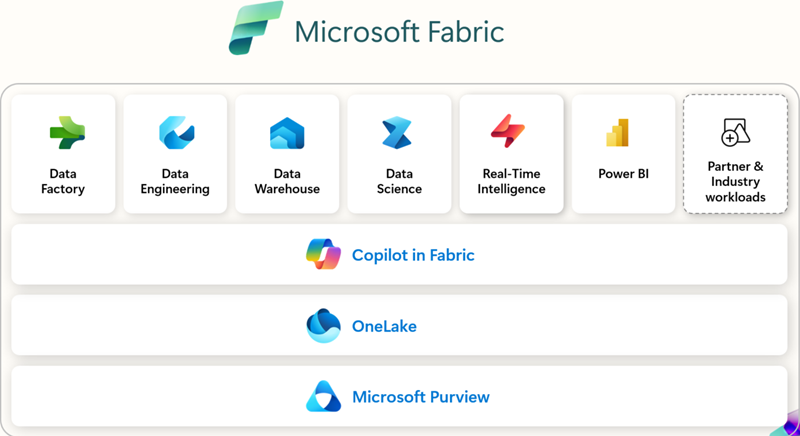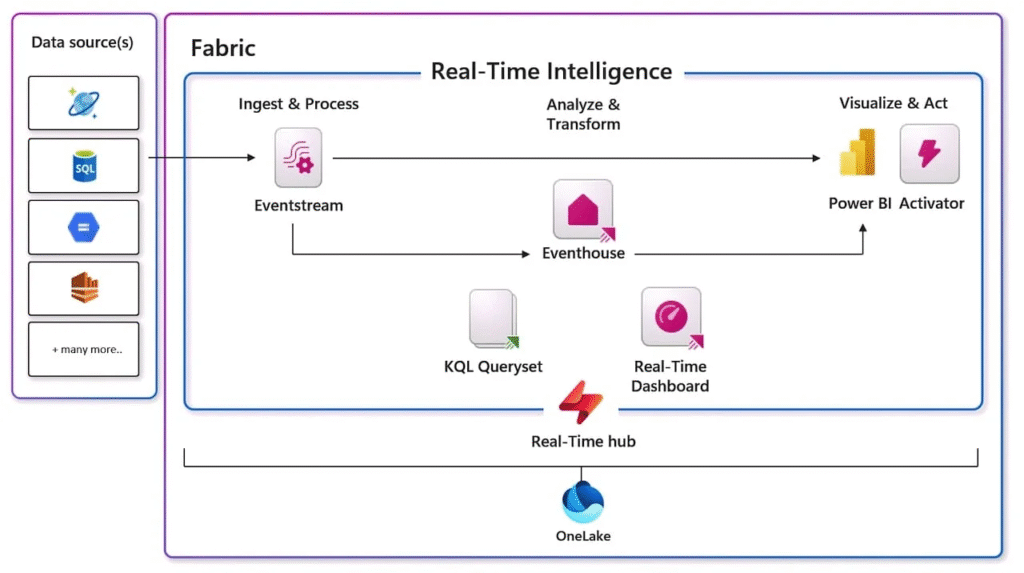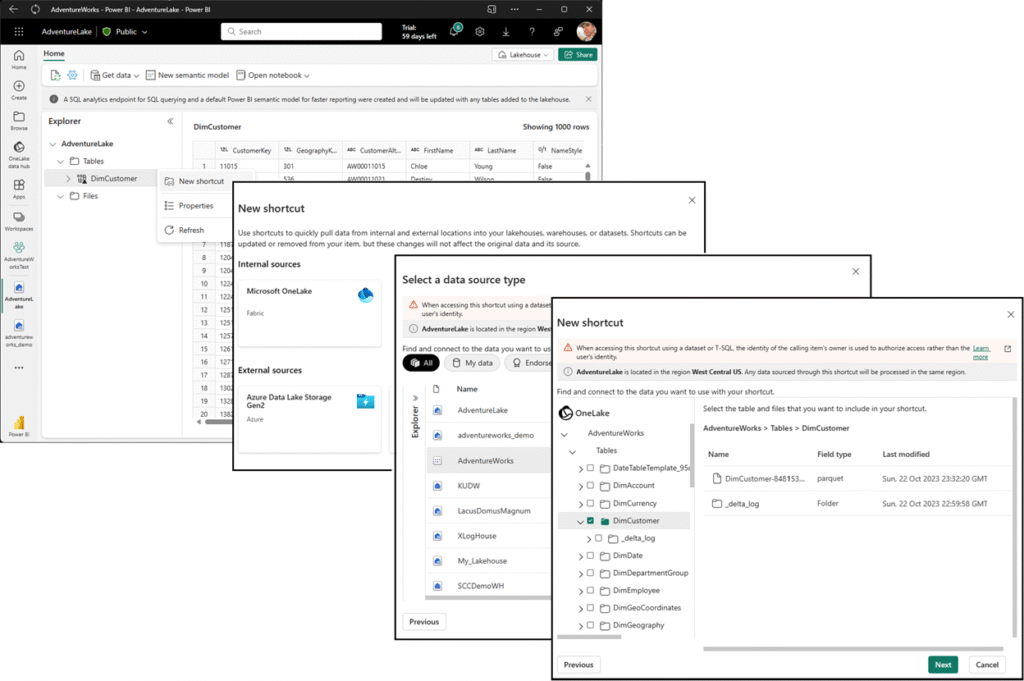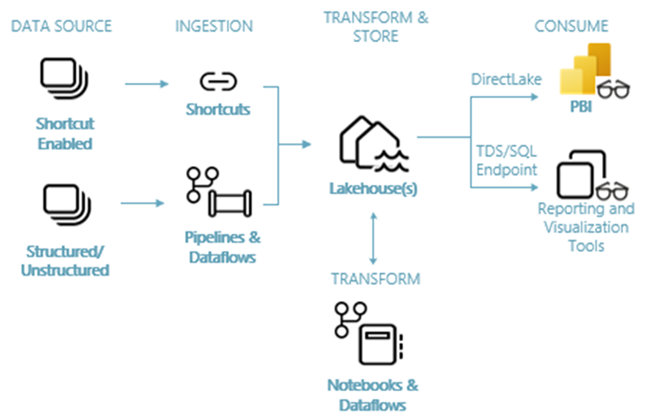Industry Recap: From Possibility to Proof
Every technology platform promises transformation — but few deliver measurable, cross-functional impact.
Microsoft Fabric is now entering that rare category where the conversation is no longer about potential — it’s about proof.

Over the past year, enterprises across manufacturing, retail, and finance have operationalized Fabric to move beyond analytics unification toward AI-ready decision intelligence.
The results? Tangible outcomes that showcase how contextual intelligence, real-time analytics, and AI governance converge to create business momentum.
My Pick of Top Use Cases: Fabric in Action Across Industries
ZEISS: Turning Data Chaos Into Contextual Clarity
For decades, ZEISS Group, a global leader in optics and optoelectronics, managed an intricate web of data environments across its many business divisions. Each unit had its own analytics stack, resulting in duplication, conflicting metrics, and governance overhead.
By deploying Microsoft Fabric, ZEISS created a single, governed layer of intelligence that connected its entire data estate — from R&D to production and sales. Using Fabric’s unified storage and metadata capabilities, the company eliminated redundant datasets while maintaining lineage, access control, and trust.
What Fabric provided wasn’t just a consolidated repository, but a semantic foundation: a shared understanding of how data relates across divisions. This allowed teams to collaborate on insights without debating data definitions. Decision-making accelerated, costs dropped, and analytics became a business enabler rather than a bottleneck.
The takeaway: Fabric’s greatest value for large, distributed enterprises lies in turning disconnected data into connected meaning.
Real-Time Intelligence: Moving From Reaction to Anticipation
Traditional analytics describe what happened — often long after it matters. Reports arrive days or weeks later, forcing teams to react instead of anticipate.
Microsoft Fabric Real-Time Intelligence redefines this dynamic by merging streaming ingestion, real-time processing, and live visualization into one governed environment.
As illustrated below, Fabric’s event-driven pipeline ingests data through Eventstream, processes and transforms it in Eventhouse, and enables low-latency analysis via KQL Queryset and Real-Time Dashboards.
This architecture seamlessly connects operational telemetry, IoT signals, and transaction data to Power BI Activator, where insights can be acted on instantly — not retrospectively.

For enterprises, the business impact is immediate:
- Manufacturers detect anomalies and predict equipment failures before downtime occurs.
- Retailers dynamically balance stock levels and respond to shifting demand patterns in real time.
- Logistics providers monitor shipment flow and resolve bottlenecks as they happen.
By blending streaming and historical data in a single OneLake-powered workspace, Fabric transforms the organization from reactive to anticipatory — delivering decisions at the speed of business.
AI and Machine Learning: Closing the Loop Between Insight and Action
In the AI-driven enterprise, the value of data lies not just in analysis but in activation — turning insight into action through governed intelligence.
Microsoft Fabric’s deep integration with Azure AI Foundry enables this full cycle within a single environment:
data preparation, model training, deployment, and monitoring — all connected through OneLake.
With OneLake Shortcuts, data scientists and engineers can now seamlessly connect structured and unstructured sources — from SQL to Azure Data Lake — without duplication. This “data once, use everywhere” model dramatically reduces friction between analytics, AI, and operations.

Once data is unified, teams can train predictive models — from fraud detection to customer churn — using Azure AI Foundry and feed results directly into Power BI dashboards or agentic workflows.
Each dataset and model automatically inherits Fabric’s security and governance policies, ensuring that innovation happens responsibly and at scale.
The result is a continuous feedback loop — data → model → decision → action — where every interaction improves both business outcomes and model intelligence.
Fabric transforms AI from an isolated capability into an integrated business system, closing the gap between data science and decision science.
Architecture Simplification: The Power of One Copy
Perhaps the most underrated outcome of Microsoft Fabric adoption is its architectural simplicity.
Most enterprises still juggle multiple data stores — data lakes for scientists, warehouses for analysts, and marts for business users — leading to redundancy, version drift, and governance overhead.
Fabric’s Lakehouse architecture, powered by OneLake, collapses these silos into a single governed foundation. Data is ingested once through shortcuts or pipelines, stored centrally in the lakehouse, and consumed directly by Power BI or any other visualization tool — all from one physical copy.

This “one copy, many experiences” model translates into measurable gains:
- Lower storage and compute costs by eliminating duplication.
- Consistent analytics across departments, ensuring everyone operates on the same truth.
- Reduced operational overhead with simplified governance and unified lineage.
In practice, this means the finance team running SQL queries and the data science team building machine learning models are both operating from the same dataset, ensuring strategic alignment between experimentation, insights, and execution.
From Data Management to Business Momentum
What ties these stories together is a common narrative — Fabric is moving enterprises beyond managing data to activating it.
At ZEISS, it enabled contextual collaboration. In manufacturing and logistics, it enabled real-time optimization. In data science, it accelerated the path from experiment to impact. Across all, it replaced fragmentation with coherence.
The lesson for technology leaders is clear: the business value of Fabric doesn’t come from its components — warehouses, lakes, or pipelines — but from the intelligence fabric they form together.
The Future: AI-Ready Operations at Scale
As enterprises push deeper into AI transformation, the focus will shift from building copilots to maintaining the intelligence ecosystems that power them. Fabric’s unified foundation positions it as that ecosystem — the substrate where data, context, and reasoning coexist.
In the coming year, expect to see Fabric power new classes of use cases: predictive maintenance, digital twins for supply chains, and domain-specific AI agents that reason over live enterprise data.
When viewed through that lens, Fabric isn’t merely another data platform — it’s the blueprint for AI-ready operations. The enterprises adopting it early aren’t just managing information; they’re shaping the infrastructure of intelligent decision-making itself.
What CXOs Should Do Next (Prescriptive)
- Prioritize Unified Data Governance: Start with your most fragmented data estates — ERP, CRM, and supply chain — and migrate them under OneLake governance.
- Operationalize Real-Time Scenarios: Launch one streaming use case (e.g., production monitoring or sales telemetry) using Fabric Real-Time Intelligence.
- Integrate AI Seamlessly: Build your first predictive model inside Fabric using Azure AI Foundry integration to close the data-to-decision loop.
- Measure Business Value: Track operational KPIs like downtime reduction, inventory turns, or customer retention linked to Fabric insights.
- Simplify Architecture: Retire redundant lakes and marts — unify around Fabric’s lakehouse model for consistency and cost efficiency.
Final Reflection: From Data Platform to Business Platform
Fabric’s growing ecosystem of enterprise use cases shows that the platform’s real value isn’t in unifying data — it’s in activating intelligence.
Across industries, organizations are proving a simple truth:
When data is organized, contextualized, and governed, it doesn’t just describe the business — it drives it.
Microsoft Fabric is now more than a data platform.
It’s the operational fabric of enterprise AI, powering the shift from information management to intelligent execution.
Views: 16
